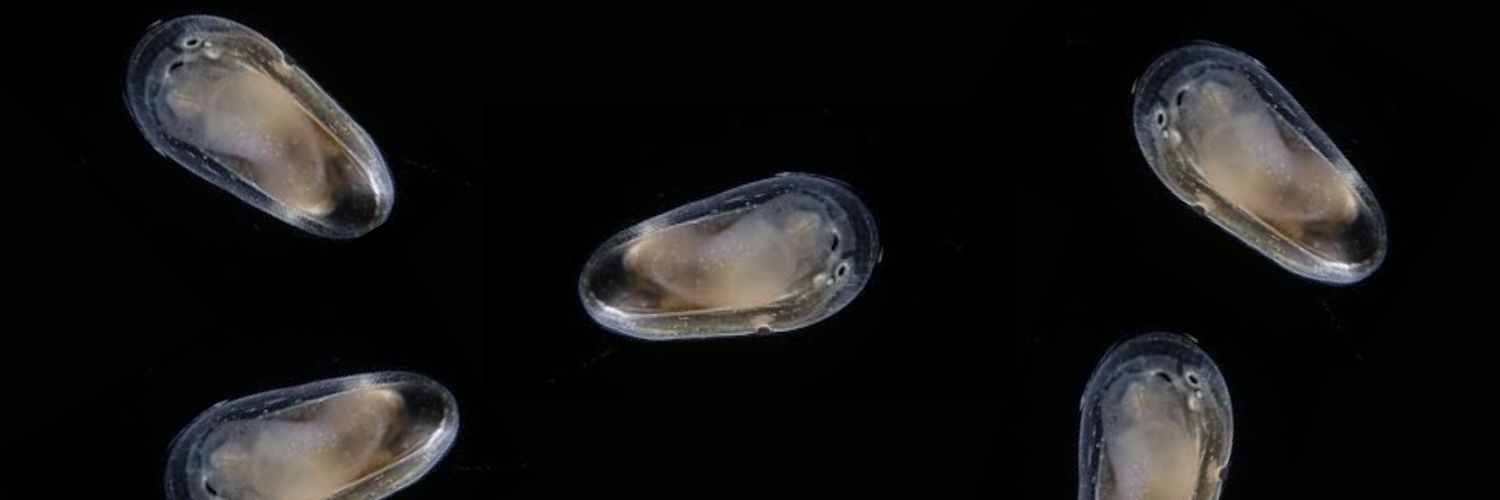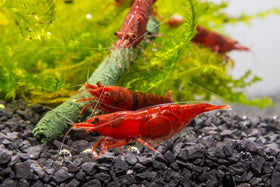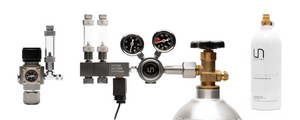
6 Types of Aquarium Pests (& How to Get Rid of Them!)
Written by: Tammy (@aquarist_tl) and Team Buce Plant
Have you ever encountered tiny unknown (and unwelcome) creatures crawling around inside your aquarium and wondered what they were? It’s a pretty common sight to see in established planted aquariums, especially planted shrimp tanks. While most of these little critters are harmless (and actually beneficial to the tank), there are some that may pose a threat to your fish or shrimp. This leaves us with the predicament: how to get rid of aquarium pests.
In this article, we will go over:
- Where did they come from?
- How do I prevent pests in the aquarium?
- Different types of aquarium pests
- How to get rid of them/control the population

Where did they come from?
While it seems like these tiny pests appeared out of nowhere, they had to have come from somewhere. They most likely were transferred into the aquarium through plants, substrate, decor, or even fish or invertebrates that had been in a tank that was inhabiting them. These pests will rapidly reproduce once they are in their new aquarium under the right conditions.
How do I prevent pests in the aquarium?
You can greatly decrease the chance of getting any of these creatures into your aquarium by quarantining or bleach dipping everything that’s been in a tank with them before putting it into your own (especially aquarium plants!). If it’s hard goods such as decoration, hardscape, or substrate, you can leave it outside of water for a while and make sure it’s completely dry.
There are TWO ways to we recommend remove any pests or eggs that have potentially clung onto new plants and repurposed items going into your aquarium:
- Quarantine (click for how-to): this is the process of keeping new plants in a separate fish-free tank or container than the one they’ll be going in.
- Bleach Dip (click for how-to): arguably the best way to disinfect your plants/repurposed decor before placing them in your tank.
Different Types of Aquarium Pests
So you've recently started a new tank or added new aquatic plants or decor into your aquarium... and now you you have noticed these tiny THINGS taking over! Although they are unsightly, pests are a common nuisance in the freshwater aquarium hobby. Don't panic - there's always a solution. Let's identify the main types of pests that are commonly found in home aquariums (& how to get rid of them!)
1. Detritus Worms

Detritus worms are white worms that look as thin as strands of hair. They’re typically found on or in the substrate. They also can be seen wiggling through the water column in the absence of predators, but for the most part reside in the substrate. These worms are completely harmless to the tank’s inhabitants.
Detritus worms are great for the ecosystem of the aquarium because they’re detritivores, meaning they eat the decaying organics in the tank. This helps to further break down the waste, making it easier for plants to utilize it as their food source. Although, we know they can be an eyesore. Keep reading to learn how to rid of detritus worms in the aquarium.
How to Remove/Control Their Population
1. Keep the aquarium CLEAN!
Detritus worms are named that for a reason- they eat detritus! Because of this, thoroughly cleaning the tank significantly reduces the amount of food available for them. Manually remove any algae present as well because they may feed on this too!
Make sure to do routine maintenance as slacking off may cause a spike the population! Upping your water changes (from once to twice a week for example) will help. Note that Buce Plant recommends at least one water change per week as regular maintenance for most tanks.
2. Siphon/vacuum the substrate
This will remove some of the worms and their source of food. While performing a water change, use your finger to stir up the substrate and kick up the underlying detritus as you siphon.
3. Don’t overfeed your fauna / Feed less
Forewarning: detritus worms will thrive off of the uneaten food.
Reduce fish feedings to a smaller amount once every 2 or 3 days. If you have an extreme case of overpopulation, consider feeding less in general (once a week) because it's not necessary for most fish/shrimp to eat everyday.
4. Add predators
Luckily, most fish will gladly eat these worms whenever they see them! No worries, detritus worms are a healthy snack for fish. Bottom-feeders like loaches or corydoras would be especially helpful since they dig through the substrate for food, and these worms will predominantly be there.
2. Planaria

Planaria can usually be found in two forms: white planaria (Procotyla) or black/brown planaria (Dugesia). They may look similar to detritus worms at first glance, but these flatworms can be identified by their arrow-tip shaped heads. They’re usually spotted crawling along the glass under the substrate. They move in a similar way as slugs.
Planaria are typically harmless to fish, but white planaria have been found to consume baby shrimp or even adult ones when the shrimp are vulnerable (e.g. right after molting). White planaria are carnivorous, unlike the black/brown planaria that are detritivores (i.e. eat decaying organics).
How to Remove/Control Their Population
1. Keep the aquarium clean
Since some eat detritus, cleaning the tank reduces the amount of food available for them
Make sure to do routine maintenance as slacking off may cause a spike in population
Siphon the substrate to manually remove some of the planaria as well as any potential sources of food. While performing a water change, use your finger to stir up the substrate and kick up the underlying detritus as you siphon.
2. Don’t overfeed / Feed less
Planaria will thrive off of the uneaten food
If you have an extreme case of overpopulation, consider feeding less in general as it’s not necessary for most fish/shrimp to eat everyday
3. Add predators
Luckily, most fish will gladly eat these flatworms whenever they see them
Bottom-feeders like loaches or corydoras would be especially helpful since they dig through the substrate for food, and these flatworms will be predominantly there
4. Use chemicals/treatments
Chemicals should be used as a last resort because it’s possible to unintentionally harm other livestock. Make sure to thoroughly read product instructions and dose accordingly.
- SL-Aqua Bio Protector Z1 is designed to kill planaria and hydra quickly!
- Fenbendazole (canine dewormer) has also been said to be effective against planaria.
3. Limpets

Credit: @Connudatus on YouTube
Limpets are gastropods that resemble clams with only half of their shells. They are in the same family as slugs and snails and often mistaken by new aquarists as pest snails. While more common in the saltwater side of the hobby, you may spot freshwater versions of these small critters slowly gliding along the walls of the tank.
Common limpets are harmless, and are actually great at eating algae! Limpets arguably help control water conditions in the planted tank. However, they can be an eyesore when there are too many of them in the aquarium.
How to Remove/Control Their Population
Limpets are considered a bit difficult to get rid of since not much is known about them in freshwater aquariums and they’re usually not a target for most fish/invertebrates to prey on.
Although we include limpets in this blog, they can actually be considered beneficial to your aquarium. Many hobbyists claim that limpets help keep their tank cleaner (like aquarium snails). Some hobbyists claim that even with a population spike, limpets eventually disappear after a couple months. Nonetheless, here are some ways to help reduce their population:
1. Keep the aquarium clean
During maintenance, make sure to scrape off the algae from the walls of the tank and try to scrub off any algae from hardscape or any other decorations. Remember to try to siphon out the algae once it’s in the water column or at the bottom of the aquarium! It's best to scrape algae during your weekly water changes.
2. Manual removal
Work to manually remove limpets from your tank by using bait traps, or removing them by hand. This may seem like a redundant task, but the best way to control the population is by manually removing the adults the moment you spot them.
3. Add competition
You can add nerite snails or other algae eaters to outcompete the limpets for food.
4. Copepods

Copepods are tiny, white flea-like critters that can be found skipping around in the aquarium. They are detritivores, so it is beneficial to have them in the aquarium as part of the tank’s ecosystem. It may be hard to spot them in aquariums with fish, but they may be more prevalent in shrimp tanks since shrimp aren’t known to go after them.
Copepods also make a great snack for small fish. Some aquarists even try to raise colonies of them to feed young and growing fish fry! While physically harmless, it has been said that some copepods may carry diseases that can infect your fish.
How to Remove/Control Their Population
1. Keep the aquarium clean
Since they eat detritus, cleaning the tank reduces the amount of food available for them!
Make sure to do routine maintenance if you don't want to cause a spike in population. While performing a water change, use your finger to stir up the substrate and kick up the underlying detritus as you siphon.
- Tip: Copepods are attracted to light - shine a flashlight in one area of the tank to gather a cluster of them together, then they can be easily removed from the tank via siphon.
2. Don’t overfeed / Feed less
Copepods will take advantage of the uneaten food.
If you have an extreme case of overpopulation, consider feeding less in general as it’s not necessary for most fish/shrimp to eat every day.
3. Add predators
Small fish like rasboras, tetras, and guppies will be eager to hunt for copepods. Larger fish won’t notice them or see them as food.
5. Hydra

Credit: @dannysaquariums on Twitter
They can be a danger to small fish fry or baby shrimp, and a nuisance to small fish or invertebrates because of their stinging capabilities. Hydra get their name because of their ability to multiply by being cut into separate parts. Each part will regenerate to form its own respective hydra, like the heads of the Greek monster, Hydra.
How to Remove/Control Their Population
1. Keep the aquarium clean
Since they feed on tiny creatures like copepods, which feed on detritus, keeping the tank clean should gradually reduce their population
2. Stop/Reduce feeding of live or powdered foods
Hydra eat microscopic foods like baby brine shrimp or infusoria. They can also go after powdered foods that aquarists feed to fish or shrimp fry. Removing these food sources will starve them out.
3. Add predators
Small fish like rasboras, tetras, guppies or anabantoids like bettas or gouramis may eat the hydra as a snack.
4. Use chemicals
Chemicals should be used as a last resort because it’s possible to unintentionally harm other livestock.
- SL-Aqua Bio Protector Z1 is designed to kill planaria and hydra quickly!
- Fenbendazole (canine dewormer) has also been said to be effective against hydra.
6. Snails

We already have an extensive article about aquarium pest snails for you if you’d like to learn about them! In this article, we go over the different types of pest snails and how to get rid of them. Click below to read more about freshwater snails:
Hopefully this information eases anyone that was worried about an unknown creature they spotted in their tank. Keep in mind that most of these pests are harmless to your aquarium’s inhabitants, and are beneficial in aiding the tank with the nitrogen cycle! With proper maintenance and prevention measures, you can easily keep their population under control.
Has this article helped you? Please leave a comment below!
If you have any questions regarding this article, please DM us on Instagram or Facebook so we can assist you! @buceplant





Comments
Leave a comment